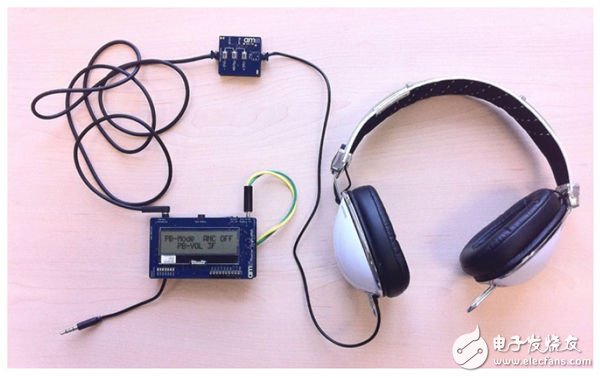Audio active noise reduction technology is very popular among consumers. So far, it has been mainly used in stand-alone active noise-canceling headphones and headsets. Consumers want to enjoy music in noisy environments and are willing to buy headphones that offer this capability.
At present, mobile phone manufacturers are taking active noise reduction technology as a major differentiation advantage of their products, providing an excellent audio experience in call and media consumption. The most economical and convenient way to reduce noise is to have a built-in noise reduction circuit in your phone. However, noise pickup must be implemented on the headset rather than on the phone, as the phone may be placed in the user's pocket and may block the noise source.
This brings great difficulty: how to transmit the noise signals of the left and right channels from the earphone to the mobile phone through the standard 3.5 mm audio interface, and return the noise reduction signal from the mobile phone to the earphone. A standard analog audio interface typically has four channels. Two channels are used for the left and right channel speakers, a microphone channel and ground. The microphone channel is also used to power the microphone. When making a call, the microphone transmits a voice signal to the phone.
When the 3.5 mm audio interface is used in the traditional analog mode, it is impossible to transmit the noise signals of the left and right channels from the earphone to the mobile phone for processing. Austriamicrosystems has developed a new digital multiplexing technology that actually creates additional channels in the microphone channel. These channels can be used in noise reduction applications to transfer sampled noise from two or four additional left and right channel microphones in the headset to the phone.
In other applications, additional channels can be used for medium to low data rate data communication with audio accessories, such as adding display capabilities to accessories, transmitting sensor data, or other additional features. Of course, the traditional working mode of the audio interface will also be preserved, so standard headphones that do not support enhanced features can still be used. This article describes how to implement full-duplex data communication through a 3.5 mm audio interface.
Simultaneous voltage and current modulation
Digital microphones are now widely used as serial sigma-delta modulated bit rate streams based on oversampling clocks to provide audio signals. This makes it possible to provide full dual-communication using multiplexed signal digital technology. The challenge is to avoid interference between upstream and downstream signals on the same line, while providing a high enough bit rate to meet consumer demand for high sound quality. One possible technique is to use both voltage and current modulation techniques on the microphone channel: one to provide the upstream signal and the other to provide the downstream signal.
To verify the effectiveness of this technology, austriamicrosystems has developed a complete demonstration system that includes noise reduction and the ability to connect to a mobile phone or MP3 player with a 3.5mm audio interface. It provides an uplink signal of approximately 2 Mbit/s and a downlink signal of 12 Mbit/s.
The demonstration system consists of a main circuit and peripheral circuits (see Figures 1, 2). (In the actual end product design, the main circuit will be embedded in the mobile device, and the peripheral circuit is on the control part of the headset.)

Figure 1: Block diagram of a digital multiplex demonstration system.

Figure 2: The Austrian Microelectronics demonstration system shows the main board (bottom), the peripheral board with the volume up, mode and volume down buttons (top), and the headset.
The battery is connected to the main board to provide a separate power source. The main board powers the slave board through the microphone channel of the 3.5mm microphone interface while transmitting the modulated microphone signal. The main board generates a synchronous clock that is synchronized with the peripheral board clock.
Solar power is the ultimate renewable energy source whether you're an eco-minded consumer or practical individualist. The sun's light is sustainable energy that provides a resource that is renewable and has a very low carbon footprint. Solarhome is a premier provider of reliable, durable, proven photovoltaic systems from leading manufacturers, allowing you to harness this free energy alternative. Our grid-tie and battery backup options mean those cloudy days and long nights won't leave you without electricity.
Solar System Order,Solar System Pictures,Solar System Project,Solar Power Plant
Yangzhou Beyond Solar Energy Co.,Ltd. , https://www.ckbsolar.com